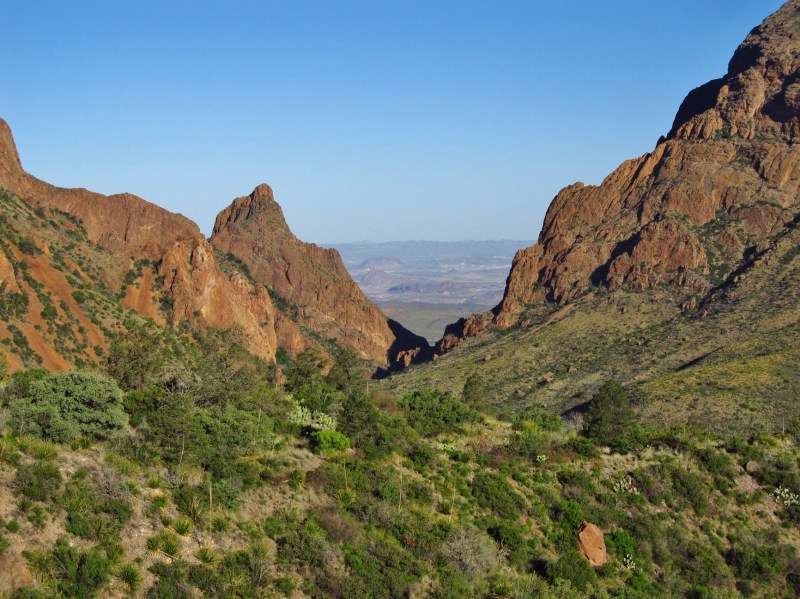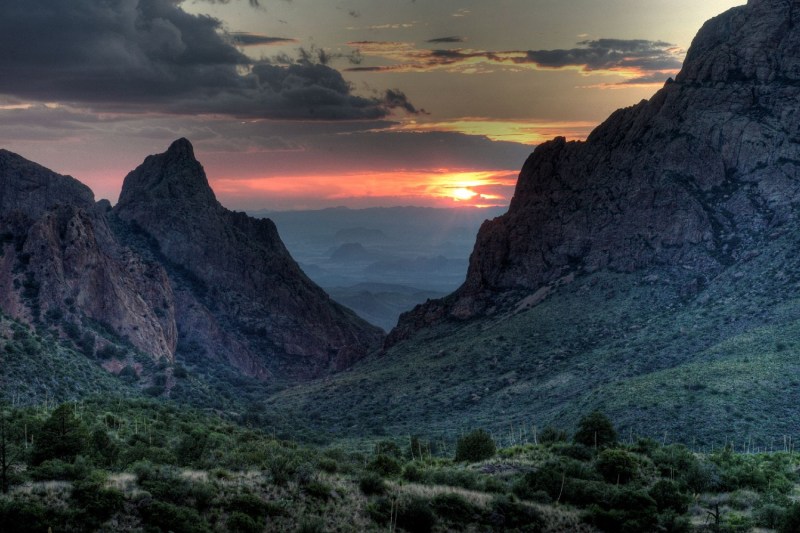Despite being larger than Rhode Island at 1,252 square miles, Big Bend National Park only sees about 500,000 visitors per year due to its remote location. Nestled in a remote corner of southwest Texas, this national park has so much to see, from the Rio Grande to dinosaur fossils and hot springs.
One interesting part about Big Bend is that it combines three unique ecosystems in one place: the Chihuahuan Desert, where you can see sand dunes, cacti, and rock formations, the Chisos Mountains, which are full of forests, and the Rio Grande, which carves towering canyons. Here, you’ll also see some of the best stargazing in the entire world.
Epic adventures are waiting just around the river bend, so here’s everything you need to know about Big Bend National Park to make sure that your stay is the best yet.
What’s the best time to visit Big Bend National Park?

Since Texas summers are no joke, the most pleasant time for Big Bend activities is in the spring (March to April) or the fall (October to November). In the summer, temperatures can easily surpass 1oo degrees Fahrenheit and in the winter, they will plummet down to freezing. Sometimes, there will even be snowfall in the region, but if you decide to come in winter, it shouldn’t affect your hiking experience. Just stay warm, and you’ll be fine.
No matter when you go, come prepared. Wear a hat, use strong sunscreen, and bring 4 liters of water per person per day on full-day hikes. Be mindful of desert critters (scorpions, snakes, spiders). It’s a good idea to shake your shoes out before putting them on your feet. Keep in mind that cellphone reception is poor in the park. Help is a long way off (the nearest hospital is 100 miles away in Alpine), so don’t go beyond your limits.
Getting to Big Bend National Park

This park is far from Texas’s and the American Southwest’s major urban areas, and that’s honestly part of Big Bend’s allure. It’s about a 9-hour drive from Albuquerque, New Mexico, and it’s about a 10-hour drive from Tucson, Arizona. Even if you live in Texas, you’ll be up for a serious drive: It’s over 7 hours from Austin, about 9 hours from Dallas, and about 10 hours from Houston. The nearest airports are in Midland (220 miles northeast of the park) and El Paso (315 miles northwest).
Book lodging or campsites (and a rental vehicle if you need one) months in advance. Bring appropriate gear, such as layers for cool mornings and evenings, which you can peel off as the blazing midday sun arrives. The free park maps are decent for day hikes, but if you’re heading into the backcountry, pick up a good topographic map like one published by National Geographic. Fuel up and get cash before you head into Big Bend: Panther Junction has gas and an ATM.
Big Bend National Park has two main visitor centers: One at Panther Junction, near the south end of Highway 385 and another at Chisos Basin, where you’ll also find the Chisos Basin Campground and the Chisos Mountains Lodge. Three other visitor centers open seasonally from November to April.
There’s no public transportation in the park, so you’ll need a car. If you plan to explore some of the backcountry roads, make it a high-clearance SUV.
Where to stay at Big Bend National Park

Big Bend National Park has four campgrounds: Chisos Basin Campground, Rio Grande Village Campground, Cottonwood Campground, and Rio Grande Village RV Park. Each one offers a slightly different experience, so here’s the breakdown.
Chisos Basin Campground
As the name suggests, the Chisos Basin Campground sits in the basin of the Chisos mountain basin. Here, campers can enjoy sprawling views of the Casa Grande and Emory Peak. With easy access to some of the park’s most popular trails, the Chisos Basin Campground is a popular choice among visitors. One of my favorite parts of this campground is the ability to watch the sun set between the peaks.
Ready to book? This park is open year-round on a first-come, first-served basis. If you have an RV or trailer over 20 feet, I would not recommend this campground due to the narrow roads and sharp turns that you would need to make. The campsites are small but comfortable, but please note that no fires are allowed anywhere in the park.
Rio Grande Village Campground
As a forest gal myself, camping in the Rio Grande Village Campground would probably be my top pick. Yes, there’s still the dry desert air, but here, there is the blessed shade of a grove of cottonwoods and acacia trees set along the Rio Grande. With more stunning hikes nearby, like the Rio Grande Village Nature Trail, you’ll have the adventure of a lifetime.
Don’t forget to reserve your spot! RVs and trailers are allowed here, and there’s even an ADA campsite with a paved walkway with an accessible picnic table and grill. It’s right by a water spigot and a restroom facility, and since all of the roads are paved, it’s very wheelchair friendly. Even the boardwalk portion of the Rio Grande Village Nature Trail is wheelchair accessible from here, so everyone can have a great time.
Cottonwood Campground
The Cottonwood Campground is a quieter spot at Big Bend National Park, but it’s definitely worth it. Since it’s right in between the Castolon Historic District and the Santa Elena, you also have access to the Ross Maxwell Scenic Drive, which will take you through the Solstol Vista Overlook, Mule Ears Viewpoint, and other historical sites along the way.
Not many people know about this gem, so choose this one if you are looking for a bit of solitude. Just be aware that there are no hookups and generator use is not permitted. Two sites are fully ADA accessible, with flat paved surfaces and access to a vault toilet.
Rio Grande Village RV Park
The Rio Grande Village RV Park is the only park at Big Bend that is not run by the National Park Service (NPS). Actually, it’s operated by Forever Resorts, and it’s the only park with full RV hookups. With 25 back-in sites, the NPS asks that rigs beyond 38 feet remain at home due to the size of the parking lot and the orientation of the available spaces. Since this is an RV park, it’s prudent to note that tents are not permitted. While there is no cellphone reception, there is internet connectivity and a camp store nearby.
What to do at Big Bend National Park

The national park has over 150 miles of trails, from short jaunts to multi-day backpacking adventures. One of the best full-day hikes is the ascent up Emory Peak, a roughly 10.5-mile roundtrip hike that affords magnificent views from atop the park’s highest summit (7,825 feet). For something shorter but no less rewarding, hike the 1.7-mile Santa Elena Canyon Trail, which takes you through a steep-walled canyon along the edge of the Rio Grande.
Speaking of the Rio Grande, this life-giving river in the desert offers a wide range of aquatic adventures. If you’re not packing a canoe, sign up for a river trip with a park operator like Far Flung Outdoor Center, which is based in Terlingua. Going strong since 1976, this outfitter offers river trips ranging from half a day to three- and four-day trips, camping in pristine spots along the way. For DIY adventures, Far Flung also hires out gear, including canoes and open-topped Jeep Wranglers.
While you’re in the Big Bend area, be sure to pay a visit to Terlingua, a former mining town that went bust in the 1940s. You can check out a desert graveyard and the ruins of old buildings, some of which have been revitalized into newer restaurant and lodging options. Basically, if you’re looking for any urban amenities, you’re most likely to find them in Terlingua. Otherwise, Big Bend is about a 2.5-hour drive away from Marfa.
Wherever you roam, be sure to leave some time at the end of the day for a soak in the park’s hot springs. Set along the Rio Grande on the southeast side of the park, the hot springs are reachable via an easy half-mile hike, and the 105-degree Fahrenheit waters offer a delightful cap to the day’s adventures.




